All Paper Economy
 Intitial jobless claims drop, but continued claims rise
Intitial jobless claims drop, but continued claims rise'Initial' claims for unemployment benefits declined to 377,000 claims from last week’s 389,000 claims, while 'continued' claims increased by 34,000, resulting in an “insured” unemployment rate of 2.6 percent.
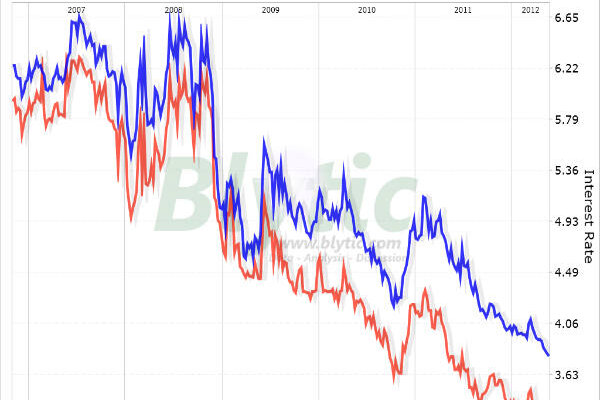 Long-term mortgage rates hit record low levels, survey shows
Long-term mortgage rates hit record low levels, survey showsThe Mortgage Bankers Association published this week the results of a survey that includes the purchase application index, which has been highlighted as particularly important for capturing the demand side of residential real estate.
- Non-manufacturing business index flat, but industry optimistic
Index indicates that service related business activity went flat in May with the business activity component increasing while the overall non-manufacturing index improved just slightly in April; respondents slightly mixed, but with more positive expectations.
 Total unemployment increases slightly
Total unemployment increases slightlyIn May, 'total unemployment,' including all marginally attached workers, increased to 14.8 percent, while the traditionally reported unemployment rate increased slightly to 8.2 percent.
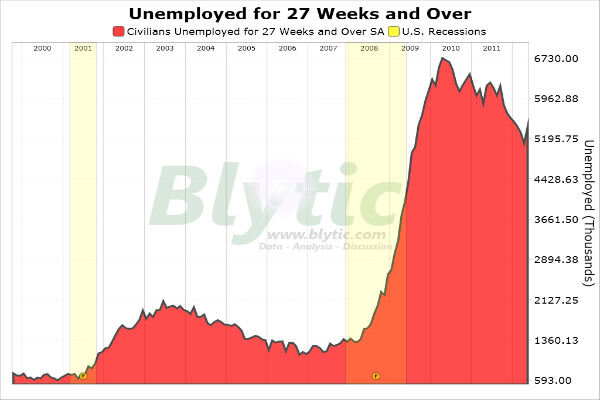 A recovery-less recovery? Analyzing the unemployment numbers
A recovery-less recovery? Analyzing the unemployment numbersToday's reports showed that conditions for the long term unemployed worsened notably in May and remained distressed by historic standards. Workers unemployed 27 weeks or more increased to 5.411 million.
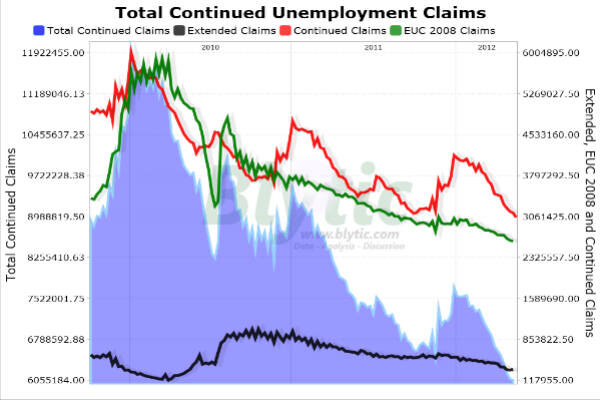 Newest jobless numbers show increase in initial claims
Newest jobless numbers show increase in initial claimsThe newest jobless claims report showed a notable increase to initial unemployment claims and a decline to continued unemployment claims while seasonally adjusted initial claims approached the closely watched 400,00 level.
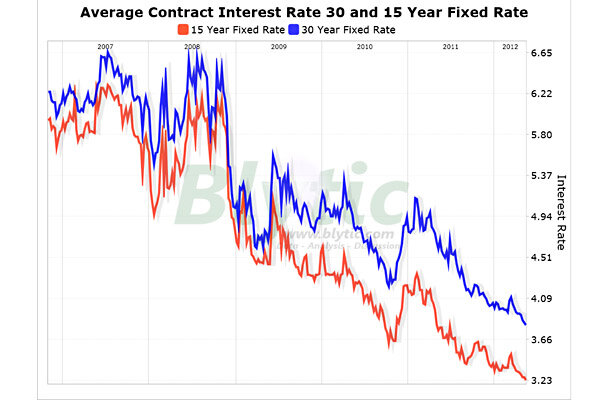 Mortgage rates tumble to record lows. Again.
Mortgage rates tumble to record lows. Again.The average rate for a 30-year fixed rate mortgage declined 2 basis points to 3.81 percent since last week, the lowest value on on record for this MBA series, while the purchase application volume declined 0.6 percent, and the refinance application declined 1.5 percent over the same period.
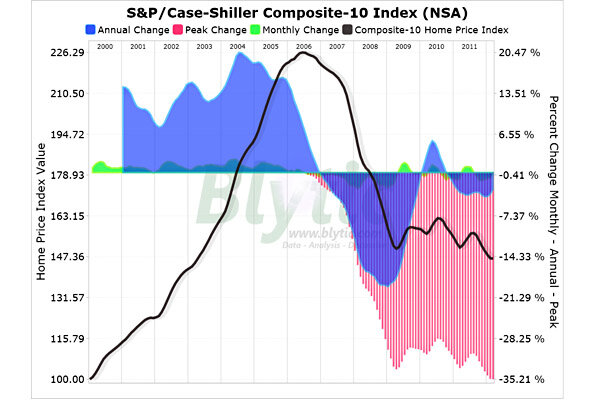 S&P/Case-Shiller: Home prices decrease
S&P/Case-Shiller: Home prices decreaseCase-Shiller's Composite-10 price index declined 0.09 percent since February, while the Composite-20 index declined 0.03 percent over the same period resulting in its lowest level since early 2003.
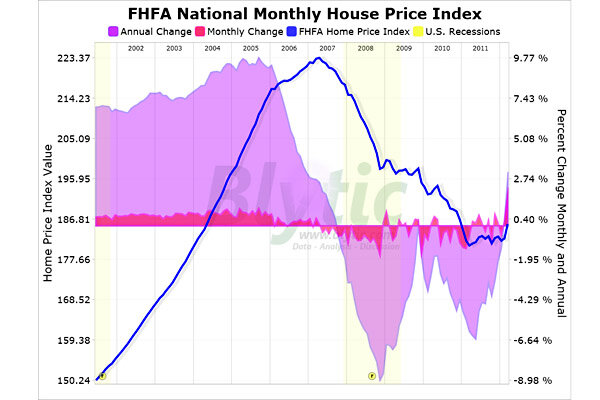 Home prices increase
Home prices increaseIn March, home prices increased 1.78 percent since February, rising 2.69 percent above the level seen in March 2011.
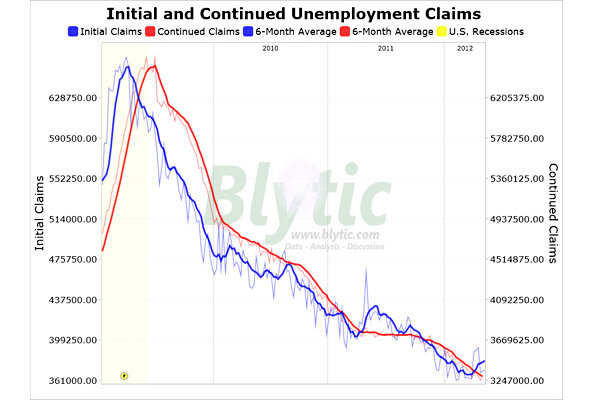 Unemployment claims drop
Unemployment claims dropSeasonally adjusted 'initial' unemployment declined to 370,000 claims from last week’s revised 372,000 claims while 'continued' claims declined by 29,000, resulting in an 'insured' unemployment rate of 2.6 percent.
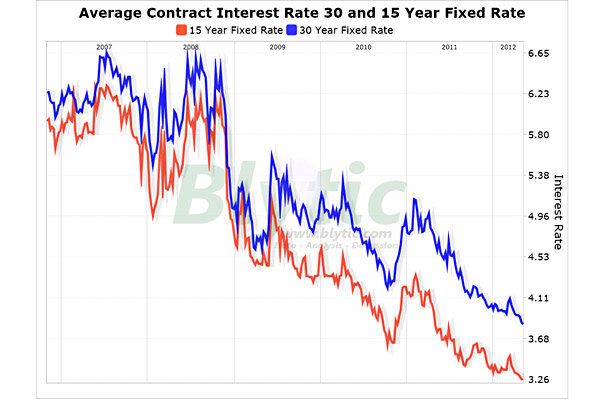 Mortgage rates slide to record lows
Mortgage rates slide to record lowsMortgage rates continue to drop well below 4 percent. The average rate for a 30 year fixed rate mortgage declined 2 basis points to 3.83 percent since last week, the lowest value on on record for this MBA series. The purchase application volume declined 3.0 percent and the refinance application increased 5.6 percent over the same period.
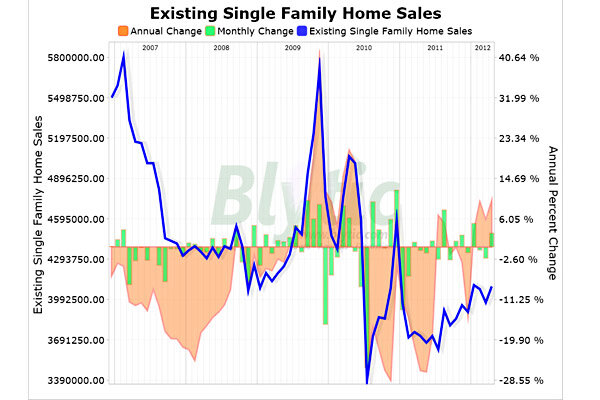 Existing home sales on the rise
Existing home sales on the riseSingle family home sales also improved rising 3.0 percent from March and 9.9 percent above the level seen in April 2011 while the median selling price increased 10.4 percent above the level seen in April 2011.
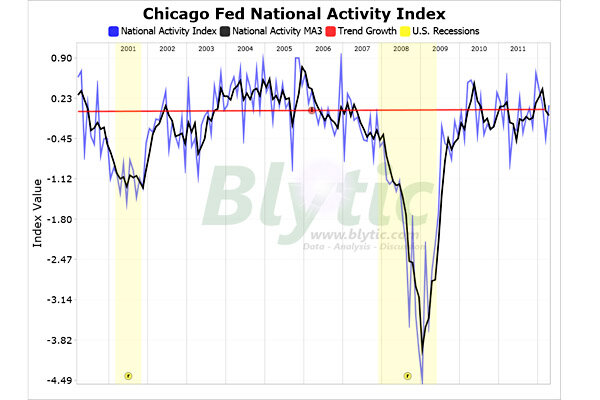 Chicago Fed: US economy improving
Chicago Fed: US economy improvingThe Chicago Federal Reserve National Activity Index, a weighted index of 85 economic indicators, showed signs of improvement for the US economy.
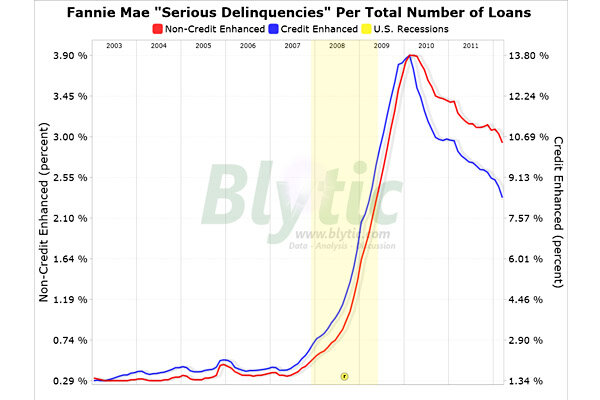 Fannie Mae: delinquent loans dropping
Fannie Mae: delinquent loans droppingTotal serious single family delinquency declined slightly in March, but remained at distressed levels.
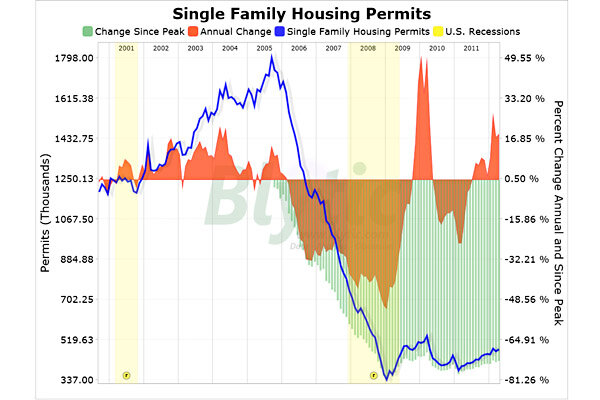 Housing permits on the rise
Housing permits on the riseSingle family housing permits, increased a notable 1.9 percent from March to 475,000 single family units, and increased 18.5 percent above the level seen in April 2011, but still remained an astonishing 73.58 percent below the peak in September 2005.
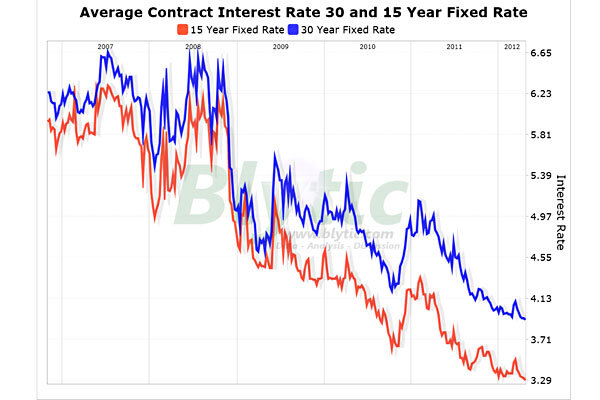 Mortgage rates inch down to 3.91 percent
Mortgage rates inch down to 3.91 percentThe average rate for a 30 year fixed rate mortgage declined 1 basis point to 3.91 percent since last week while the purchase application volume increased 3.4 percent and the refinance application increased 1.3 percent over the same period.
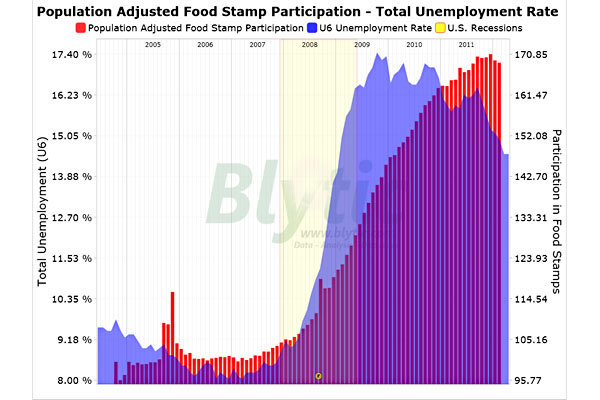 Food stamp use continues to rise
Food stamp use continues to riseIn February, 123,385 recipients were removed from the food stamps program with the current total still increasing 4.81 percent on a year-over-year basis while household participation increased 6.56 percent.
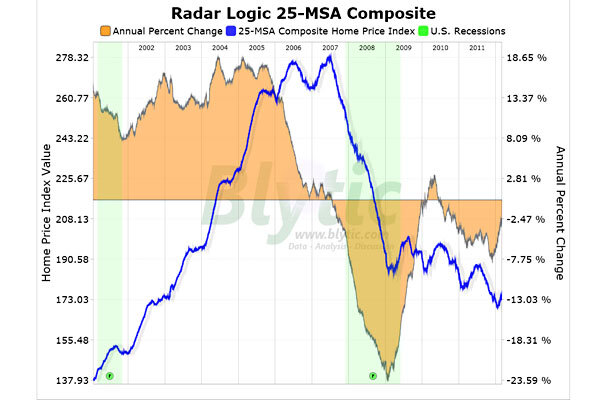 Radar logic: Housing prices are dropping
Radar logic: Housing prices are droppingAs of early March, prices have declined 2.71 percent below the level seen in March 2011.
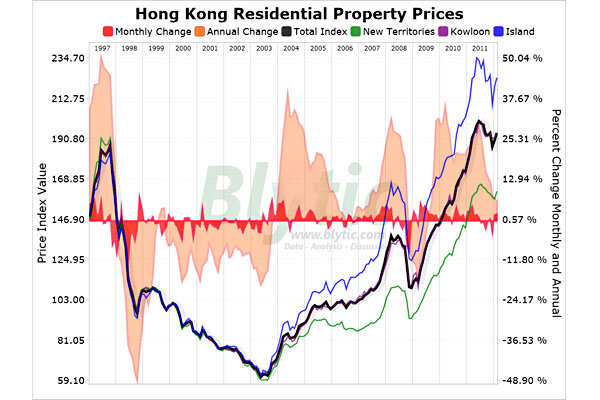 Hong Kong bubble? Housing prices rise.
Hong Kong bubble? Housing prices rise.In February, the price of residential properties in Hong Kong increased a notable 2.05 percent since January and climbed 5.96 percent above the level seen in February 2011.
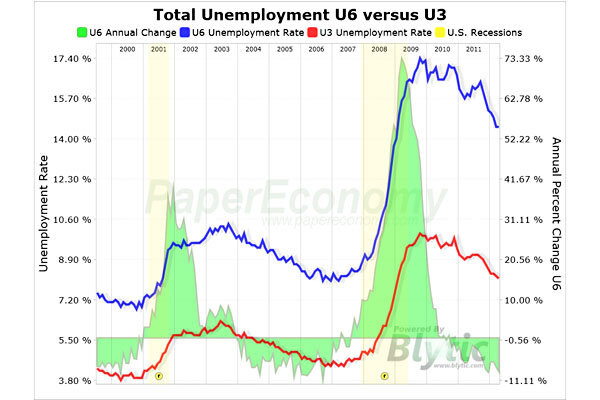 Total unemployment goes flat
Total unemployment goes flatIn April, 'total unemployment' including all marginally attached workers went flat at 14.5 percent while the traditionally reported unemployment rate declined slightly to 8.1 percent.






















